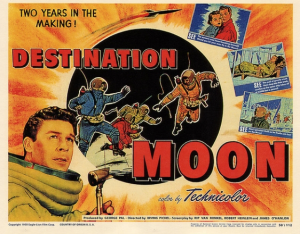 The recent accident involving Virgin Galactic’s SpaceShipTwo – and the tragic death of one pilot and critical injury of another – highlights the dangers inherent in any type of space flight. It has also brought up the inevitable discussion of what the accident implies for the viability of the space tourism industry. Whether the industry remains viable in the near future will be a combination of technical capabilities – e.g., determining what caused the accident and building enhanced redundancies into the flight system – and the response of potential customers. It is the case of the latter upon which I will focus as research conducted with a number of colleagues provides the only publicly available estimates of the individual consumer demand for the type of sub-orbital flights that Virgin Galactic plans to offer.[1]
The recent accident involving Virgin Galactic’s SpaceShipTwo – and the tragic death of one pilot and critical injury of another – highlights the dangers inherent in any type of space flight. It has also brought up the inevitable discussion of what the accident implies for the viability of the space tourism industry. Whether the industry remains viable in the near future will be a combination of technical capabilities – e.g., determining what caused the accident and building enhanced redundancies into the flight system – and the response of potential customers. It is the case of the latter upon which I will focus as research conducted with a number of colleagues provides the only publicly available estimates of the individual consumer demand for the type of sub-orbital flights that Virgin Galactic plans to offer.[1]
Virgin Galactic reports that, to date, not a single individual has cancelled their deposit placed on a future flight of one of its vehicles. Our work implies that this is not unexpected in the short run but other factors may be more important in determining the viability of Virgin Galactic and similar ventures in the near future and long run.
The market for space tourism as currently envisioned is incredibly small even when one only considers those wealthy enough to have the discretionary income to pay the required fees. While surveys show that many people would like to go into space, those that would even consider doing so at the prices currently being asked would be less than 10% of even the most high net worth individuals (e.g., more than US$5M in assets). Aside from wealth, what appears to drive the willingness to consider space flight as a tourist is pretty much as expected – at the margin, males are more willing to think about space as an option, as are younger people and those with advanced university degrees – and the demand is quite sensitive to price. All in all, this is a market that is unlikely to generate more than niche demand in the near term.
However, more telling and most relevant to the issue at hand, is the relationship between risky behaviour and the willingness to consider space as a tourism alternative. Those more likely to consider sub-orbital or orbital space tourism are those that are more likely to exhibit thrill and sensation seeking tendencies on psychological tests and also more likely to own ‘risky’ toys – motorcycles, speedboats, guns, etc. Those interested in orbital flights are also more likely to engage in activities in which they might be harmed physically – hang-gliding, skiing, racing, etc. This thrill seeking implies that those most interested in space would prefer options that are more, rather than less, risky (e.g., orbital alternatives to the suborbital alternatives being offered by Virgin Galactic). The sort of activity that Virgin Galactic is offering is, therefore, likely to appeal to those that like risky things but generally do not engage in lots of risky behaviour. They are thrill seekers but seek safer thrills.
When we look at the impact of accidents we see a clear relationship between accident rates and the likelihood that an individual would choose a space flight. Basically, individuals expect that accidents will occur, but are much less likely to consider space tourism as an alternative to other thrilling activities if the ratio of accidents to length of time operation has safely operated decreases. Indeed, if there are several fatal accidents these expectations turn very much against the operator independent of no matter what their level of experience might be.
Taken together our work hints at a difficult future for Virgin Galactic. Independent of the daunting technical task ahead, the sort of ‘safe but thrilling’ alternative it is envisioning is potentially not safe enough for those willing to consider it and too safe for thrill seekers who will wait for orbital alternatives. In addition, given its niche positioning and the operational costs of conducting a flight, it is unlikely that: (a) potential customers will accept more risk for a lower the price, or (b) that Virgin Galactic will be able to find a price low enough keep customers while making the venture viable. So while its current stable of customers is unlikely to cancel soon since they can always cancel later, what is more important is whether the next tranche of customers will consider space as a tourism alternative without assurances that the thrill is there but the safety is not much different from any other form of amusement park ride.
[1] See, Going Where No Tourist Has Gone Before: The Future Demand for Space Tourism (https://www.academia.edu/286337/Modelling_Consumer_Choice_Behaviour_In_Space_Tourism) & Crouch, GI, Devinney, TM, Louviere, JJ & T Islam (2009), “Modelling Consumer Choice Behaviour in Space Tourism,” Tourism Management, 30(3): 441–454.

Recent Comments